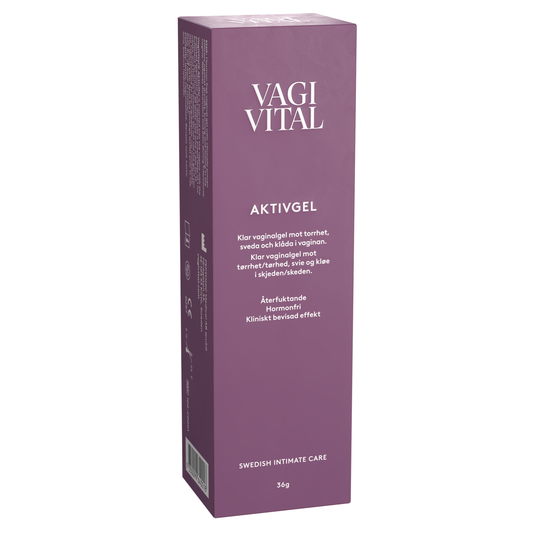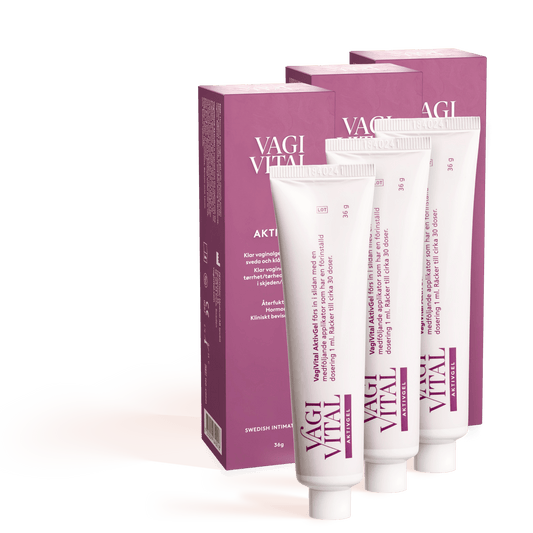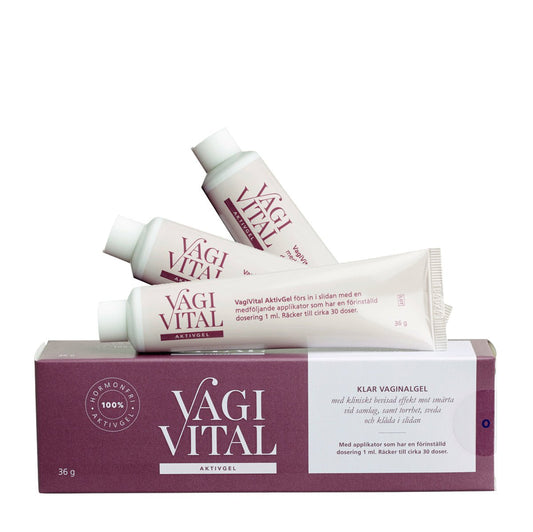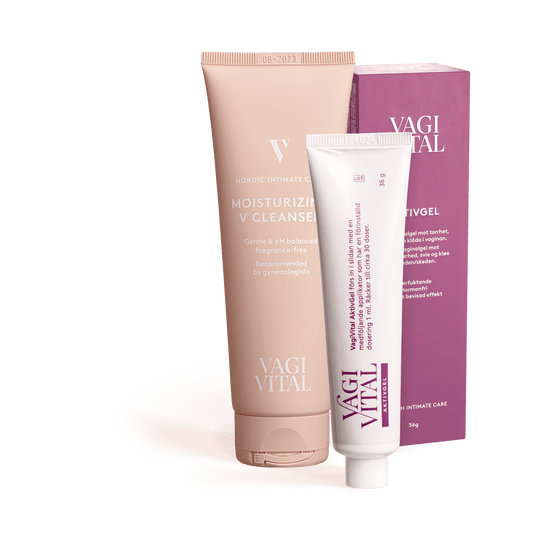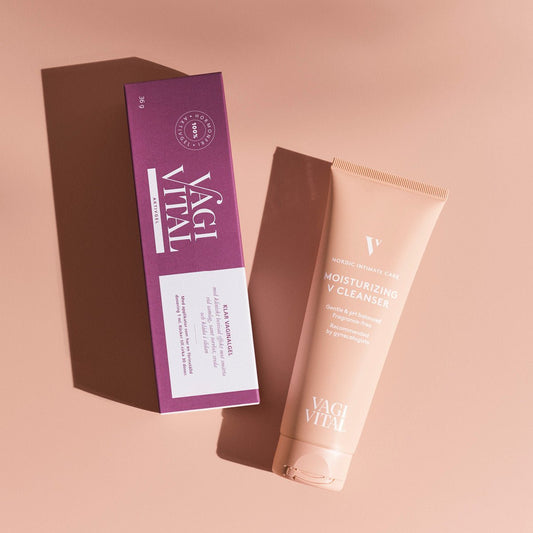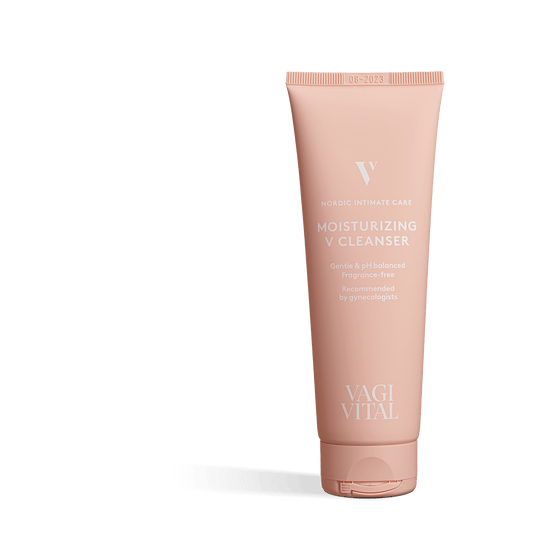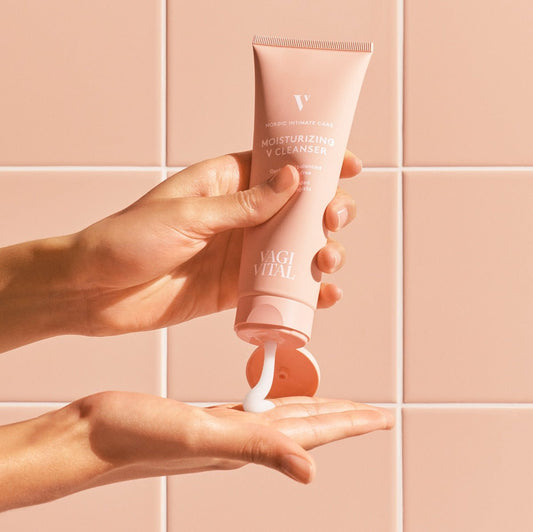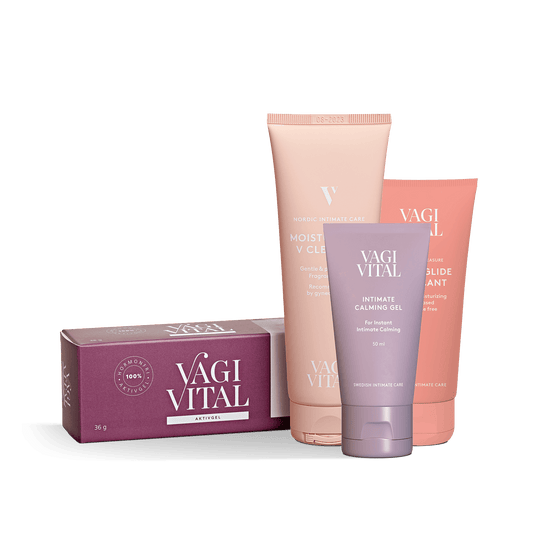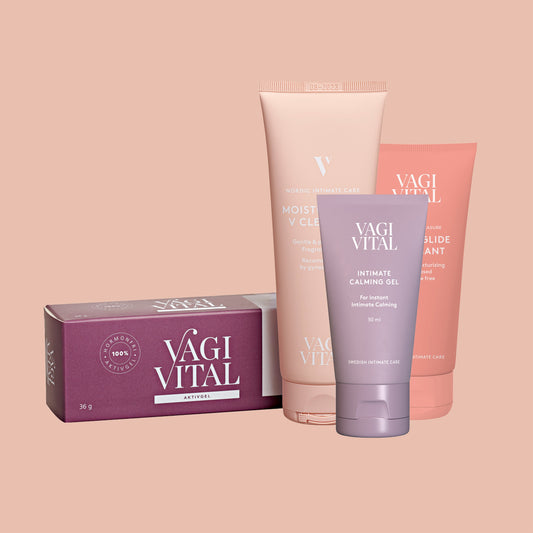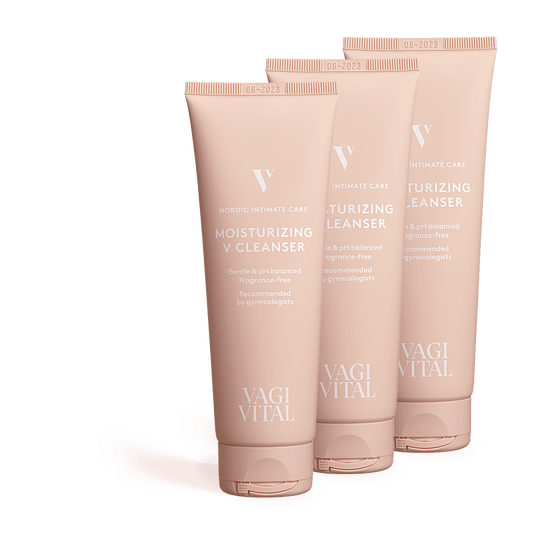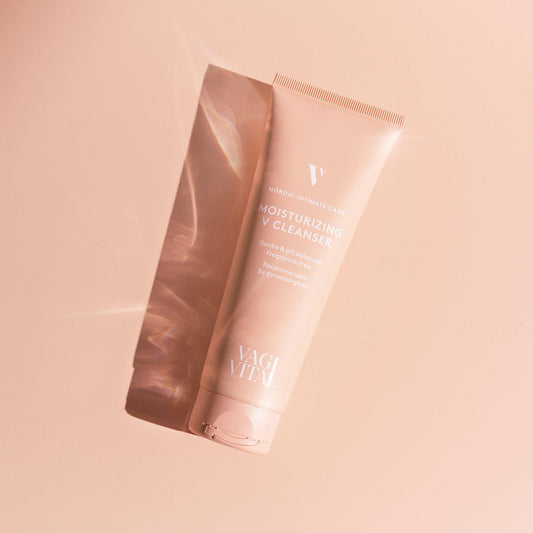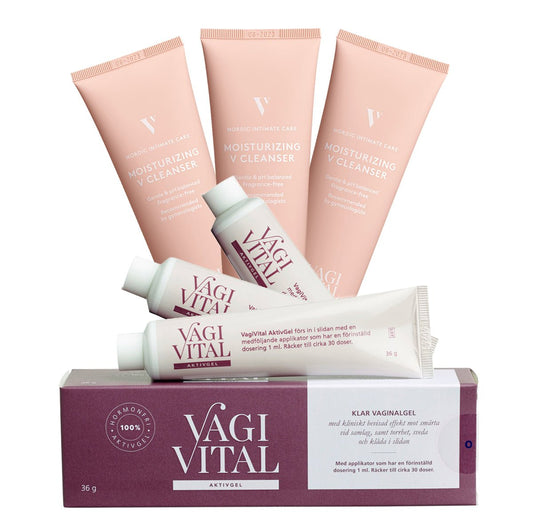The difference between vulva and vagina
Recently, I experienced one of those moments that really makes you stop and think. It started with an email – not just any email, but one from a dedicated gynecologist. She had read one of my previous blogs titled “Washing the vagina correctly – important advice for intimate washing.” What she pointed out was something so simple, yet fundamental: my choice of words. I had written “vagina” when I should have written “vulva.” And of course, she was absolutely right. Because there is indeed a significant difference between vulva and vagina. They are actually two completely different parts of the female body, each with its unique function and care needs. I do know that. Really. But still, I fell for the simple but incorrect terminology. I must admit it’s incredibly easy to do, even for someone like me who is aware of and understands this important difference. Using the right words when we name our genital parts is actually very important, and it’s not just about being meticulous with language. First of all, when we know the difference between a vulva and a vagina, we become a bit like body experts on ourselves. It helps us take better care of our health and understand our body. Talking openly and correctly about our genital parts can also help break old taboos and false myths. That’s why it’s time to clarify the difference between vulva and vagina once and for all ♥
THE VULVA – THE EXTERNAL PARTS
The vulva is the collective name for the external parts of a woman’s genital area that are visible and protect the internal reproductive organs from bacteria and infections. One should avoid using intimate products containing perfume or soap on the vulva because they can disrupt the natural pH balance and the sensitive vaginal flora. VagiVital V Cleanser is a unique intimate wash as it cleans both water- and oil-based impurities without disturbing the sensitive vaginal microflora or pH while moisturizing, as it is based on the same unique moisturizing formula as VagiVital AktivGel.
You can find VagiVital V Cleanser here!
ANATOMY OF THE VULVA
🌺 Mons pubis (the mons pubis)
The mons pubis, also known as the mons pubis mound, is the fatty cushion located directly over the pubic bone, at the base of the abdomen. The pubic hair in this area serves several practical functions, as it helps protect the area from friction and provides a layer of protection against bacteria and other pathogens. Additionally, pubic hair plays a role in the natural spread of pheromones, which is important for sexual attraction. In some cases, the size or shape of the mons pubis can change due to weight gain, weight loss, or hormonal changes that can occur during different stages of life, such as pregnancy or menopause.
Read the blog about pubic hair here!
🌺 Labia majora (the outer lips)
In the vulva, there are two sets of labia – the large (labia majora) and the small (labia minora). The labia majora are the outer, larger folds of skin surrounding the vulva. They are usually covered with pubic hair and contain fatty tissue, sweat glands, and oil-producing glands. Their main functions include protecting the internal genitalia and contributing to sexual response by swelling and becoming more sensitive during sexual arousal.
🌺 Labia minora (the inner lips)
The labia minora are thinner folds of skin located inside the labia majora. They have no pubic hair and are rich in blood vessels and nerve endings, making them very sensitive to touch. Their functions include protecting the opening of the urethra and vagina as well as contributing to sexual stimulation through their sensitivity. It is also important to remember that both the size and shape of both the outer and inner labia vary greatly from woman to woman. These variations are normal and part of the body’s natural diversity. The labia also play a role in the body’s defense against infections by maintaining a healthy microclimate in the vulva.
🌺 Clitoris
Located at the point where the inner labia meet, the clitoris is a central and highly sensitive organ in the female reproductive system. It is an extensive organ that extends into the body, similar to an iceberg where only the tip is visible. The visible part, the glans clitoris, represents only a small portion of the entire structure and varies in size and shape from person to person.
The clitoris is one of the most nerve-dense parts of the human body, with about 8,000 nerve endings – twice as many as on the male penis. This extremely high sensitivity makes the clitoris central to sexual arousal and orgasm. Just like the male penis, the clitoris has a unique ability to swell when blood flow increases during sexual arousal, which increases sensitivity and can lead to sexual satisfaction.
In the female sexual response, the clitoris plays a crucial role, including arousal and orgasm. For many women, stimulation of the clitoris is often necessary to achieve orgasm. Interestingly, the clitoris and penis share a common origin, as both develop from the same embryonic tissue. This means they are structurally and functionally similar organs.
🌺 Urethral opening
The urethral opening is a vital part of the body’s urinary system, with the primary function of allowing the outflow of urine. In female anatomy, this opening is strategically located just below the clitoris and in front of the vaginal opening. It is through this channel that urine is transported from the bladder to the outside of the body. The female urethra differs from the male’s by its relatively short length, usually about 4 cm, which is significantly shorter than in men. This short length, along with its proximity to the anus, also increases the risk of urinary tract infections.
Read the blog about urinary tract infections here!
🌺Vaginal opening
The vaginal opening, the entrance leading to the vagina, is a central part of the female reproductive system. Located just below the urethral opening, it plays an important role in several aspects of women’s health and well-being. The vaginal opening is not only important for reproductive functions, such as intercourse and childbirth, but also for menstrual flow. This opening is flexible and can adapt to different sizes, which is especially important during childbirth when it expands to allow the baby’s passage. The elastic tissues around the vaginal opening contribute to this flexibility. During sexual arousal, the vaginal opening can also widen, facilitating intercourse and potentially increasing sexual pleasure. The vaginal opening is also affected by various factors such as infections and hormonal changes. Pain in the vulva, known as vulvodynia, is a condition where the vaginal opening experiences pain during penetrative sex, tampon insertion, or other touch. This condition was previously known as vestibulitis, but the term vulvodynia, which literally means pain in the vulva, has been used for the past twenty years.
Read the blog about Vulvodynia – pain in the vaginal opening during sex & touch here
🌺 Bartholin’s glands
Bartholin’s glands are two small but significant glands located on either side of the vaginal opening and play a central role in female reproductive and sexual health. Their main function is to produce a fluid that helps lubricate the vulva, which is crucial for comfort during intercourse and helps reduce friction and irritation. These glands are normally small, about the size of a pea, and are not visible or noticeable when healthy. The fluid they produce is released in small amounts and becomes more noticeable during sexual arousal. This natural lubrication plays an important role in maintaining the health and well-being of the vulva and also facilitates natural bodily functions such as intercourse and menstruation.
🌺 Perineum
In women, the perineum is the specified area between the vulva and the anus. Structurally, the perineum consists of muscles, tissues, and skin. It contains parts of the pelvic floor muscles, which are crucial for supporting the pelvic organs and maintaining control over urinary and fecal excretion. These muscles also play a role in sexual function and can affect sensation during intercourse. During childbirth, the perineum becomes an area of particular importance. It stretches and adapts to allow the baby’s passage.
THE VAGINA – THE INTERNAL CHANNEL
The vagina is a muscular canal that extends from the cervix (the lower part of the uterus) to the vulva.
🌺 Structure
The vagina has an anatomical structure distinguished by its unique flexibility and stretchability. These properties are crucial for several bodily functions, including sexual activity, menstruation, and childbirth. The vagina’s flexibility and ability to stretch are a direct result of its complex anatomical composition. The walls of the vagina consist of several layers of muscle tissue and elastic fibers, which allow it to expand and contract. During the menstrual cycle, the vagina also plays an important role. It functions as the channel through which menstrual blood and tissue from the uterus are transported out of the body. The most remarkable demonstration of the vagina’s adaptability is during childbirth. During this process, the vagina can stretch significantly to allow a baby to pass through the birth canal. This extraordinary ability to expand is crucial for a safe and effective delivery and demonstrates the incredible strength and flexibility of this part of the female reproductive system ♥
🌺Mucous membranes
The inner mucous membranes of the vagina, which cover the inner surfaces of the vagina, are not only important for preserving the area’s natural moisture but also for protecting against infections and contributing to a healthy microflora. The mucous membranes of the vagina are rich in glands that secrete natural fluids. Vaginal secretions are crucial for maintaining a healthy pH balance in the vagina, which is important to prevent the growth of harmful bacteria and fungi. This natural moisture also facilitates sexual activity by reducing friction and increasing comfort.
Read the blog Three common myths about the vagina here!
However, at certain times, the mucous membranes of the vagina can become dry. This can be due to a variety of factors, such as hormonal changes (especially during menopause), medical treatments, stress, or certain hygiene products. Dry mucous membranes can lead to discomfort, itching, irritation, and an increased risk of infections.
VagiVital AktivGel is a Swedish, hormone-free, and non-sticky vaginal gel that treats and cures symptoms in the intimate area such as dryness, irritation, itching, discomfort during intimate contact, and pain during urination. The crystal-clear gel is non-sticky as it adheres to the vaginal mucosa where it releases water over time, stimulates cell growth in the mucosal surface, and restores the pH balance. The product is recommended by gynecologists and its effectiveness is clinically proven. The results were documented in a multicenter study conducted by female researchers, including associate professors and professors in gynecology, from Karolinska University Hospital, Uppsala University Hospital, and Norrland University Hospital.
You can find VagiVital AktivGel here!
🌺Self-cleaning function of the vagina
The vagina is unique in its way of maintaining hygiene and health through its self-cleaning ability. This occurs through the production of natural secretions, which play a crucial role in maintaining a healthy environment. The secretions are not only important for cleaning the vagina of dead skin cells and other waste but also help maintain an optimal and balanced pH level. Such a balance is essential because it helps protect against infections and maintain a healthy bacterial flora. This flora consists of good bacteria, primarily lactobacilli, which protect against harmful microorganisms and support the vagina’s natural defense system. It is therefore important to be careful with the use of external cleaning agents or products in the intimate area, as they can disrupt this natural balance and lead to problems such as dryness, irritation, or infections. By respecting and supporting the vagina’s self-cleaning process, one can contribute to better intimate health and well-being.
🌺 Microflora
The unique microflora in the vagina consists of different types of bacteria, mainly lactic acid bacteria, which help protect against infections and maintain a healthy environment. Strong soaps and perfumed products can disrupt this delicate balance, increasing the risk of imbalance and infections.
Read the blog on how to keep the vaginal flora healthy!
WHY IS IT DIFFICULT TO DISTINGUISH BETWEEN VULVA AND VAGINA?
So why is it sometimes so tricky to keep apart what is vulva and what is vagina? Much of the confusion comes from how we talk about these parts. In Sweden, and in many other places, we have often said “the genital area” when we mean both vulva and vagina. It’s a bit like calling the whole foot a “toe” – not entirely wrong, but not exact either. This somewhat vague language can cause problems, not only when we talk about hygiene but also when we discuss health and diseases.
New research shows how important it is that we think of the vulva and vagina as two different parts. It’s a bit like having two tools in the toolbox – they look different and have different jobs. By distinguishing them and understanding their unique roles, we can become better at taking care of them. It’s not just about knowing which part is which, but also about giving each part the care it deserves. The research also highlights how a clearer terminological distinction can lead to better self-care and an increased understanding of women’s health in general. Better knowledge means better health ❤
Ps. The blog title is now naturally changed to “Washing the vulva correctly – important advice for intimate washing”. Read the full blog here!
Take care of both your vulva and vagina & Stay Pussytive ❤
/Fanny
Recommended products for you
- Choosing a selection results in a full page refresh.
- Opens in a new window.

